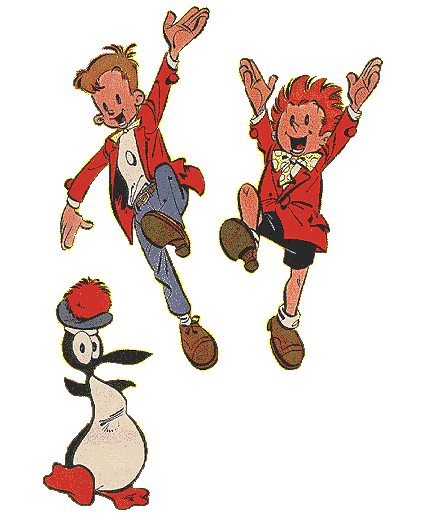

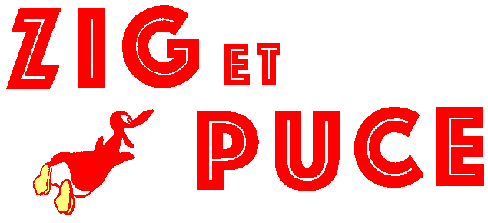
Writer/Artist: Alain Saint-Ogan (1875-1974); Greg
(pseudonym of Michel Regnier) (1931-1999) Genre Stories Publishing History
Zig et Puce are two teenagers who, with
their pet penguin, Alfred, find themselves
involved in numerous adventures, many of which contain fantastic elements. One of the earlier classic stories
took the two heroes to the 21st Century. In the 1960s, Zig & Puce prevented the sabotage of the super-powered "Prototype 0-0" and thwarted a would-be
world conqueror who used an antigravity mineral to power a flying aircraft carrier.
Writer/Artist: Alain Saint-Ogan
- Zig et Puce au XXIème Siècle [Zig & Puce In The 21st Century] (Hachette graphic novel No. 9, 1935)
- Zig et Puce et le Professeur Medor [Zig & Puce & Prof. Medor] (Hachette graphic novel No. 11, 1941)
- Zif & Puce en Atlantide [Zig & Puce in Atlantis]
(1948; not originally collected by Hachette; reprinted in 1992 in Futuropolis, Vol. 6)
- Zig et Puce et l'Homme Invisible [Zig & Puce & The Invisible Man] (Hachette graphic novel second series No. 2, 1949)
Writer/Artist: Greg
- Le Prototype Zéro-Zéro ("Tintin"
Nos. 819-848, 1964; Lombard No.3, 1967)
- La Pierre qui Vole [The Flying Stone]
("Tintin" Nos. 852-882, 1965;
Lombard No. 4, 1968)
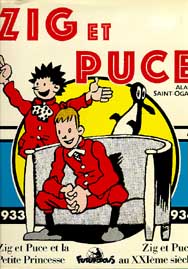
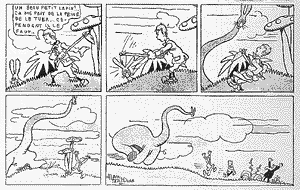
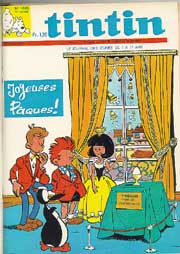
Zig et Puce is one of the oldest French
adventure strip, created in 1925 by Alain Saint-Ogan,
who followed in the footsteps of Louis Forton,
creator of les Pieds Nickeles (and grand-father of Gerald Forton). Saint-Ogan
created Zig et Puce for "Le Dimanche Illustré" [The
Illustrated Sunday], a newspaper that lasted from 1924 to 1940.
Zig et Puce was the first modern French
comics series, reflecting the influences of not only Les Pieds Nickelés, but also of American cartoonists George McManus' Bringing Up Father and
Martin Branner's Winnie
Winkle, both published with success in France at the time. It used word
balloons exclusively, a clear, semi-caricatural drawing line and established modern story-telling comics conventions.
In 1929, following in the footsteps of Zig et Puce,
Belgian cartoonist Hergé created
the immortal character of Tintin.
After their original publication in "Le Dimanche Illustré", Zig et Puce
appeared in a variety of newspapers until 1952. In the meantime, their adventures were collected in a series
of 11 graphic novels by Hachette, published
between 1927 and 1941. After the War, Hachette
released five more graphic novel. A six-volume omnibus reedition was published by Futuropolis from 1986 to 1992, collecting all of Hachette's first series of graphic novels, the first two graphic novels of the second series, plus
the uncollected Zig & Puce in Atlantis.

|
The Authors |
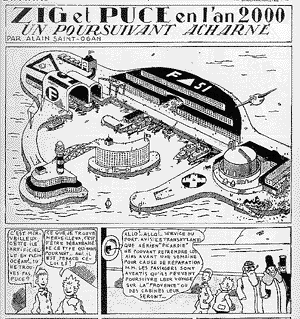 |